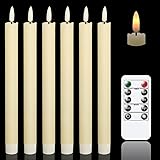Mastering a select suite of power tools is crucial for any successful DIY home renovation project. The accompanying video expertly details six foundational tools that empower homeowners to tackle an extensive array of tasks. This guide expands upon those recommendations, delving into the specific applications and operational nuances of each essential piece of equipment. By strategically selecting and skillfully employing these core tools, renovators can achieve professional-grade results while optimizing both cost and efficiency.
The Indispensable Angle Grinder: Precision and Versatility
The angle grinder stands out for its exceptional versatility in renovation scenarios. While often overlooked by novice DIYers, its utility is unparalleled. This robust device facilitates various material modifications, from grinding to cutting. Its adaptability allows for customized solutions across diverse project requirements.
Operators can interchange numerous abrasive discs to suit specific material properties. Flap discs are effective for smoothing wood and composite edges, ideal for intricate trim work. Masonry discs effortlessly slice through stone, concrete, and tile. Metal cutting discs facilitate rebar removal or custom metal fabrication. Specialized diamond-bladed discs enable precise cuts in ceramic, porcelain, and glass. The quick-change mechanism enhances operational fluidity, minimizing downtime between tasks.
Safety considerations are paramount during grinder operation. The rapid rotational speed demands focused attention. Always wear appropriate personal protective equipment, including safety glasses and hearing protection. Maintaining proper blade guards, unlike some casual demonstrations, is a best practice. A quality angle grinder, often acquired for approximately $100, offers enduring performance and broad utility. Consumable blades typically range from $5 to $50, depending on material and abrasive composition, representing a sound investment in any renovation toolkit.
High-Performance Drill Drivers: Essential for Fastening and Boring
A high-quality drill driver is fundamental to almost all renovation activities. This tool provides both rotational force for drilling and percussive force for driving fasteners. Modern impact drivers, in particular, offer superior torque and control. Their brushless motor technology significantly extends tool life and prevents overheating during intensive use.
The quick-release chuck system allows for rapid bit changes, enhancing workflow efficiency. Compatible bits feature a hex shank, securing them firmly in the chuck. From pilot holes to lag bolts, a drill driver handles diverse fastening and boring requirements. Magnetic tips further improve screw retention, simplifying one-handed operation. These tools typically operate on a 20-volt battery platform, ensuring consistent power delivery. Integrated battery indicators provide real-time charge status. A robust drill driver system can be procured for around $200, offering substantial capability for general construction and repair.
Reciprocating Saw (Sawzall): Power Demolition and Rough Cuts
The reciprocating saw, commonly known as a Sawzall, is an indispensable tool for demolition and rough cutting. Its linear blade action effectively tears through varied materials. This tool significantly accelerates the deconstruction phase of any renovation project. The quick-release blade mechanism permits rapid blade exchanges, adapting to immediate cutting needs.
Blade orientation is adjustable, allowing for horizontal, vertical, or inverted cutting angles. This flexibility is critical for accessing confined spaces or making awkward cuts. Specialized blades exist for cutting cast iron, various metals, and even wood embedded with nails. For detailed work, a fine-toothed blade can perform precision trimming on flooring. Regular maintenance, such as lubricating the gears with a penetrating oil, ensures prolonged tool efficacy. The Sawzall is a testament to rugged utility, capable of tackling challenging material removal with ease.
The Versatile Circular Saw: Straight and Angled Cuts
The circular saw is a cornerstone for accurate, straight cuts in sheet goods and dimensional lumber. This portable powerhouse, often a 7.25-inch model, utilizes the same 20-volt battery systems as other cordless tools. Its portability enhances on-site flexibility, making it a viable alternative to stationary table saws for many applications. Adjustments for both cutting depth and bevel angles are swiftly executed. This permits precise cuts at 45 degrees or other desired angles.
Optimal blade exposure is critical for both safety and blade longevity. Adjusting the blade depth to cut only slightly beyond the material minimizes friction and heat buildup. This practice extends blade life and maintains cut quality. Many models incorporate onboard wrench storage for convenient blade changes. The circular saw proves invaluable for projects ranging from framing a shed to custom shelving. Its ability to mimic table saw functionality with a guide rail system offers significant operational advantages. This feature enhances cut precision for various woodworking tasks.
Miter Saws: Precision Crosscuts and Compound Miters
A quality miter saw is paramount for achieving accurate crosscuts and angled cuts in trim and framing materials. A 12-inch compound miter saw offers considerable cutting capacity. It handles thicker stock with ease. This tool executes both miter and bevel cuts, often simultaneously (compound cuts). This dual capability is essential for intricate crown molding and precise trim installations.
For most homeowners, a non-sliding compound miter saw is sufficient. This variant capably addresses approximately 99 percent of typical DIY project requirements. Professional carpenters may opt for a sliding model, which extends cutting width. However, this upgrade adds an extra $300-$500 to the investment. For rough carpentry, where visible cut quality is less critical, making two cuts from opposing sides is acceptable. Smart procurement during sales events, typically around Christmas or Father’s Day, yields significant savings. A durable miter saw represents a long-term asset, providing reliable service for many years.
Air Compressors: Powering Pneumatic Tools and More
An air compressor provides the necessary power for a vast array of pneumatic tools. This essential utility device expands the capabilities of any home workshop. Even a compact, single-port compressor, such as the Husky model, suffices for most homeowner applications. It delivers adjustable air pressure, catering to diverse tool requirements. Despite potential noise from prolonged use, its functional benefits are immense.
This single compressor can power hardwood nailers, trim nailers, and various staplers. It even facilitates specialized tasks like spray texturing or stucco application. Investing in a high-quality, non-kink air hose, typically costing around $50, is crucial. This upgrade vastly improves usability over standard coiled hoses. Many specialized pneumatic tools, like hardwood floor staplers, can be rented for daily rates. This strategy minimizes capital investment while providing access to necessary equipment. With a personal compressor, a homeowner can complete projects such as hardwood flooring installation for a modest rental fee, approximately $35 per day. This significantly reduces overall project costs. The air compressor system, with its initial $100 investment, unlocks an expansive ecosystem of powerful, efficient pneumatic tools. This makes it an indispensable asset for comprehensive DIY home renovation.










